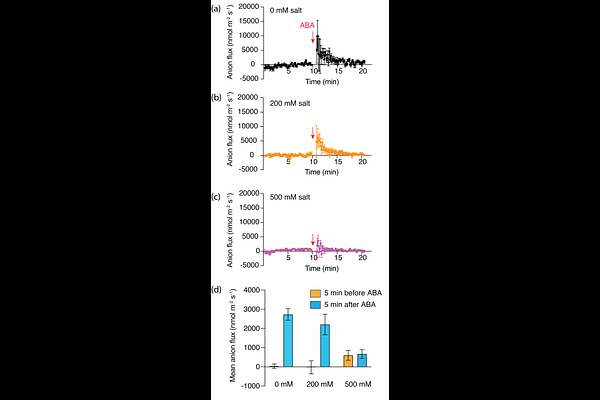Under salt stress quinoa stomatal guard cells control transpiration in an ABA-primed manner

Under salt stress quinoa stomatal guard cells control transpiration in an ABA-primed manner
Huang, S.; Messerer, M.; Muller, H. M.; Scherzer, S.; Roelfsema, M. R. G.; Weiste, C.; Krischke, M.; Korte, P.; Moog, M. W.; Mayer, K. F. X.; Ache, P.; Hedrich, R.
AbstractStomatal guard cells, located at the interface between the leaf and the atmosphere, play a key role in transpiration control and photosynthetic CO2 uptake. Halophytes like Chenopodium quinoa tolerate high soil salinity, but the mechanisms governing guard cell responses to salinity stress in relation to the associated epidermal bladder cells (EBCs) remain unknown. In this study, responses of C. quinoa guard cells under salinity stress and external ABA application were analyzed using RNA profiling and voltage-clamp-based electrophysiology. Under salt stress, guard cell RNA profiles reported the activation of ABA synthesis and signaling pathways. However, unlike EBCs, guard cells became transcriptionally insensitive to ABA. Voltage-clamp recordings revealed that under high Na+ concentrations, guard cells\' activity of K+ uptake channels remained unaffected, while they were impaired in ABA-induced activation of anion channels. As a consequence of a unique guard cell ABA response in salt-adapted plants, stomatal transpiration was reduced and CO2 sensitivity enhanced. We propose that under salt stress, C. quinoa guard cells rewire their hormone signaling to switch from an ABA-sensitive to an ABA-insensitive mode. This adaptation may reflect the halophyte\'s ability to perceive salinity as a non-stressful condition, allowing efficient water usage and sustained growth in saline environments.